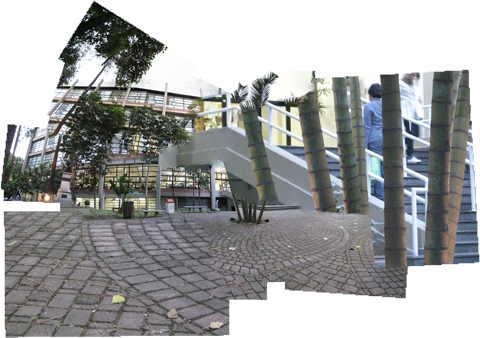COMPARED PUBLIC SPACES: SYMBOLIC ARCHITECTURE IN AREAS FOR THE ADVANCED TERTIARY SECTOR IN THE CASES OF SÃO PAULO AND MEXICO CITY.
Keywords:
espaços públicos, terciário avançado, arquitetura simbólicaAbstract
It is being developed at the School of Architecture and Urban Planning, Mackenzie Presbyterian University, the research “Spatial Reconfigurations: a study of the Ibero-American cities in compared perspectives: São Paulo and Mexico City”. The research focuses the analysis of areas occupied by the advanced tertiary sector in both studied cities (the São Paulo Southwest axis of Luiz Carlos Berrini Avenue, and Santa Fé District in Mexico City), in terms of the relationships between the architecture and the public spaces reached by the globalization process. Today researches like this are seen as very important to support the architecture and urban planning critical education and to supply information to formulate projects (designs) and urban public policies. This research theme is able to stimulate innovations in different undergraduate disciplines, like urban planning, and theory and history of architecture. It enables also the understanding of the phenomena occurring on these spaces on the environmental point of view, trying to identify those urban designs’ consequences that are imposed on those cities, such as huge congestions, lack of public space quality, difficulties to collect garbage (solid waste), lack of green areas and of designs for the interstitial spaces, and living spaces for pedestrian and bicycles circulation. Among these, it is also seen that the buildings had not been projected to include services generally offered to the working class in the studied areas, therefore leading to freight and consumers’ circulation conflicts of. The public policies do not forecast an adequate urban design that could balance these elements, and the Building Codes aren’t adjusted to these new needs, although they take care of issues like the basic solar envelope and ventilation in order to keep the built environment good performance. This article aims to start the first comparisons between the relationship of an expressive concentration of the symbolic architecture in those spaces and the lack of attention toward the structure of those local public spaces’ quality. These comparisons are based on surveys already done for both study areas. With these studies, it is hoped to improve the knowledge of this kind of situations, as described, thus contributing to these fields of study sound basis (foundation).Downloads
Downloads
Published
How to Cite
Issue
Section
License
Authors who publish in this journal agree to the following terms:
a) Authors retain the copyright and grant the journal the right of first publication, with the Project simultaneously licensed under the Creative Commons Attribution License that allows the sharing of the Project with recognition of the authorship and initial publication in this journal.
b) Authors are authorized to assume additional contracts separately for the non-exclusive distribution of the version of the Project published in this journal (e.g., publishing in an institutional repository or as a book chapter), indicating that it was originally published in this journal, with a link to the article.








 Todo o conteúdo de Cadernos de Pós-Graduação em Arquitetura e Urbanismo está licenciado sob
Todo o conteúdo de Cadernos de Pós-Graduação em Arquitetura e Urbanismo está licenciado sob 